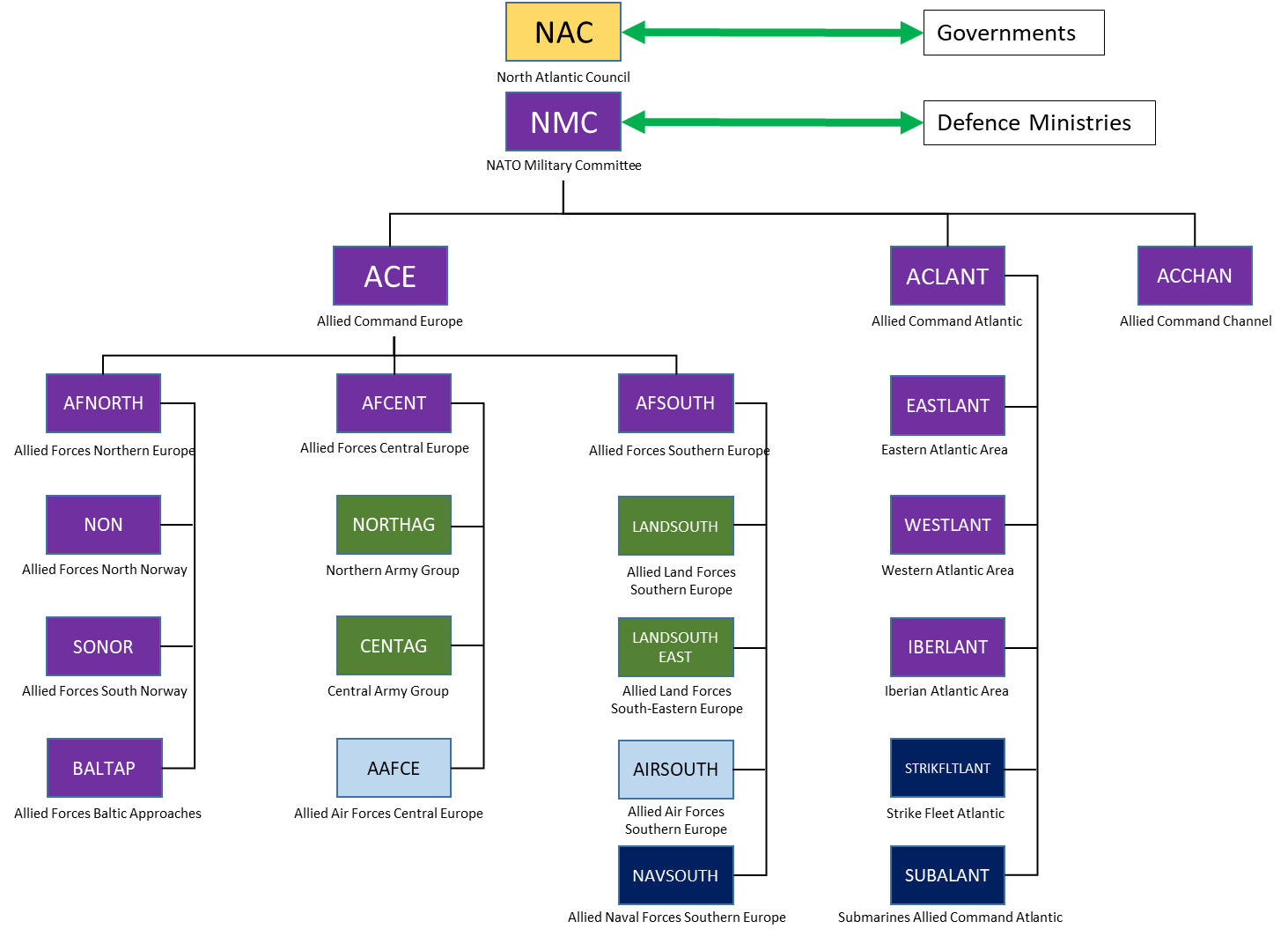The North Atlantic Treaty Organization (NATO) was formed on 4 April 1949, as a Military/Political body to counter the threat posed by the Soviet Union and the Warsaw Pact (WP)countries. The basis of the alliance is the collective defence codified in Article Five of the treaty which states: “…that an attack against one Ally is considered as an attack against all Allies.’ Note that some dates and details are modified to fit the Northern Fury storyline.
The 12 founding members of NATO are:
Belgium,
Canada,
Denmark,
France, (Withdrew from NATO’s integrated military command in 1966, rejoined 1994.)
Iceland,
Italy,
Luxembourg,
the Netherlands,
Norway,
Portugal,
the United Kingdom, and
the United States.
The following countries joined NATO between its foundation and the start of Northern Fury in 1994:
Greece (1952)
Turkey (1952)
West Germany (1955)
Spain (1982)
The reunification of Germany in 1990, meant that the former East Germany was drawn into NATO. Between 1989 and 1994 the reunification of Germany became a major friction point between NATO and western European countries and a resurgent Soviet Union.
Collectively this force – in Europe alone – amounted to over 3.7 million soldiers, sailors and airmen under arms, tens of thousands of armored vehicles, thousands of aircraft and hundreds of ships. A formidable force. Command of this force, with 16 governments and defense ministries involved however, can be complex, not to mention the scale of the geography and diversity of capabilities. At the top of the Command Structure is a political body – the North Atlantic Council (NAC) which oversees the military element of the Alliance on behalf of the member nations. Next in line was the NATO Military Committee (NMC), which issued broad policy, interfaced with the NAC and had direct communications with each nation’s Ministry of Defense (or equivalent). While the NAC and NMC dealt with issues at the Strategic level, operational planning and execution of warfighting tasks was conducted by three commanders: Supreme Allied Commander Europe (SACEUR) commanding all forces in Europe (Allied Command Europe); Supreme Allied Commander Atlantic (SACLANT) commanding all forces in the Atlantic (Allied Command Atlantic); and Commander-in-Chief Allied Command Channel (CINCCHAN). The remainder of the operational portion of the NATO command structure is depicted on the chart below:

On the tactical level were dozens of Corps, Air Forces and Fleets, however clear distinction below the level depicted becomes complex because many of the commanders were ‘double hatted’ meaning the Commander had two roles. For instance, SACLANT was also Commander US 2nd Fleet and Commander NATO Strike Fleet Atlantic (STRIKFLEETLANT). Another example is that CINCCHAN, was not a ‘Supreme’ Commander as the other two (SACEUR & SACLANT) but he was Commander in Chief FLEET (British Royal Navy) and Commander in Chief Eastern Atlantic Area, under SACLANT.
Instead of digging into the detail of NATO’s tactical structures, this Wiki page provides a good summary in the section ‘Structure in 1989’.